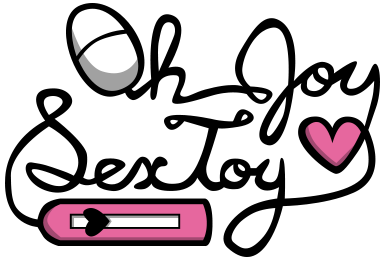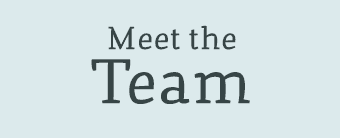
Hello everyone! It’s 2015 and once again I’ve gotten the last of my invoices paid for this year’s successful Volume 2 Kickstarter, so it’s time for me to do another numberwang wrap-up. And, of course, you can buy the books we produced from crowdfunding RIGHT HERE!

If you’re new to my Numberwang Kickstarter posts: I aim to digest and make you a summary of our Kickstarting experience, from planning to delivery and all the thinking that went into it along the way. So if you’re like me and love your numbers, or plan to do a Kickstarter, this is something that might be helpful!
If you want to see how last year’s 2014 breakdown went, check it out here!
TL;DR This year we raised $65k and again profited about $10k from it.
Here’s the numbers!

Read below for WAY more info!
Our Aim
This year we wanted to get our second year’s worth of content printed into a fresh book and pay for a re-print of Volume 1 at the same time as stock was running low. We wanted to do this with a low impact pre-ordering campaign, with as little extra bells and whistles as possible. Our intent was to be bare bones, fast and efficient.
The Planning
While we had spent a lot of the time thinking about Kickstarter from the end of Volume 1’s fulfillment until the end of 2014, we didn’t officially start planning Volume 2 until January 2015 (our aim was to get the KS live at the same time as V1’s was, April-May). As January rolled around we started getting into contact with the people we utilized for Volume 1 that we wanted back on board, Book Designer Allyson Haller, video pal Anne Moloney, and Book Plate Ink. Late in 2014 we had already made a business decision to move away from our old fulfillment company Amplifier in place for Topatoco, which we thought would garner us more comic-based cross promotion and sales with the many other titles they carry and reduce our overhead. Since most of our existing stock now lived at Topatoco, we opted to try their sister company’s Kickstarting service Make That Thing for this years fulfillment. We had some discussion about doing the fulfillment ourselves this year (My full time job now is OJST and I have a bunch of warehousing experience), but opted to give MTT a try anyway (lots of good reviews from friends and we were curious!). Their reasonable quotes were cheaper than Amp’s, and contract negotiation was positive. The guess-timated cost of having them do fulfillment seemed to only be $2000-4000 more than my guess-timates for doing it myself.
Since OJST is my full time job, we decided to only take amazing Allyson Haller on as a consultant for this book. I would do the majority of the book design (utilizing last year’s as a template), and we would bring Ally on hourly to go over my work, consult and troubleshoot. Originally we had a hard limit of $600 set aside (a figure we ended up going past, book design is hard work guys!) for her services.
With last year’s experience in our pockets we also had a few other changes planned. This year we would print smaller book plates for the signed and doodled Book Plates. Book Plate Ink‘s stellar service is costly and we had a lot of ‘large’ book plates left over we could utilize for our Unique Drawing book plate illustrations (which require a large drawing space), so a smaller batch for signatures/doodles would help cut costs.
We decided to change our reward offerings for the Kickstarter a bit too. The Custom Drawing would get replaced with a unique drawing; so we would spend less time chasing backers for their drawing descriptions and more time just drawing and getting things out the door. This way we could offer a few more drawings for the same time/cost. We also decided to bump up a few of the prices for things that sold exceptionally well and fast last time, like the ‘Be a Masturbateer’ tiers.
Last year we tried to incentivize our Kickstarter with retroactive guest artist pay raises, which seemed to go down well with everyone. Thanks to that cash influx, we can pay $100 a page to all the artists we hire now, with most comics being 4-5 pages long (So artist’s typically make $400-500 for a full comic) Sadly, we couldn’t afford to do retroactive pay increases again this year, we had now accrued a lot of guest artists and back payments to everyone would bust the bank. Without this added incentive we decided we needed something else to draw people in, so I planned a rolling release campaign. I would cut our tier’s limits a bit tight and every week roll out new amounts of the tiers as bonuses if needed. I wanted something new we could tweet about past that first release week that would get people re-visiting.
With 2014 still semi fresh in our minds, the planning phase for 2015 was relatively short and without hurdles. We knew what we wanted, who to hire/talk to, and how to do it!
Our money
In 2014 Kickstarter and printing costs was a hypothetical, so all our numbers were guesses from the onset. It was scary and difficult to see if it would produce or cost us money. This year things were much easier: we kind of already knew the costs, and knew that we would make SOME Kickstarter sales. We expected to make a lot less this year but believed we could get at least the $18k goal that we had set for volume 1 again. In addition, we had been holding onto our first year’s $10k profits to spend on this year’s printing costs, so straight away we already had a war chest from which to pay out and dip into if things didn’t go as planned.
The big question for us was guessing just HOW much we might make with a second Kickstarter so soon after the first. We expected big diminishing returns, but just how much could we expect? It remained an important factor despite our war chest: we wanted to re-print the first volume, but that would really up the costs. A good ball park number we kept talking about needing was $30k, our lovingly named ‘golden number’, where even if things went wrong we would still come out even and with a volume 1 re-print without going in the hole.
As is, we went into the this campaign trying our best not to worry about it. We committed to the Volume One re-print and decided that if the Kickstarter only hit $18-$30k, we could pay out of pocket for the rest of the re-print.
The process
Things FLEW by this year with hardly a hitch. The tiers and rewards were already planned and laid out. So all that was needed to do was get the Kickstarter campaign page pre-made, get the book plates printed, and get the book designed and sent to China. And all that stuff wasn’t complicated: it was all things we had done the last year.
The biggest difference and most time consuming was the book design process. I was picking up book designing responsibilities and there was a lot I didn’t realize had to be done. But delays and design-learning issues aside, the book was laid out and ready for the printers by March. We DID hit a small road block with Erika’s available time. March is a BUSY convention time, so we ended up with a few time-delaying last-minute typo-fixings due to her not being able to give early proofs appropriate error-checking time. But even with those few lost weeks, we had the final book files (and first payment) delivered to China BEFORE the Kickstater even went live. It also meant that we were now committed to quite a large print run: Making that first payment without even knowing if the Kickstarter would succeed was quiet nerve wracking.
Hitting post on the Kickstarter was still a scary event for us. We were amazed at the response! We hit our golden number of $30k on the first day, which blew our minds.
The Kickstarter
I think the biggest lesson was had DURING the campaign this year (instead of before or afterwards, compared with last year’s). We had struck out to make a Kickstarter for Volume 2, and a Volume 1 re-print was a secondary aim. My thinking was that folks could buy Volume 1 at our established store if they wanted a copy and, well, it never occurred to me that people wouldn’t want to do it that way. Instead, they visited the Volume 2 Kickstarter and expected a one-stop-shop. Straight away my measly 100-limited V1+V2’s combo pack sold out and we started getting all kinds of demands for different combinations of products. People wanted Volume 2s with Volume 1’s PDF (which I had overlooked, because why add a V1 PDF to a V2 print fundraiser?), both books and their PDFs, just both the PDFs and no physical books, and every other mix. We only have a handful of products but the combinations where many!
Erika and I prided ourselves on the idea of running a easy to understand, limited-tier campaign. Bare bones and without lots of extras was our aim. I thought that really worked well for the first volume. But as we started to get more and more demand for different product combinations I realized we where missing out on many sales. I caved and added many new tiers for different combinations of items, knowing it increased the fulfillment complexity, and made the layout of the Kickstarter increasingly more confused. If you look now at the end result, I’ve got 13 different tiers up there (granted a few of them are the rolled out ‘bonus’ tiers), for what was a pre-sale for ONE book!
And… I honestly can’t say what I could do differently. For Volume 3 will I have even more tiers? I don’t know. Kickstarter isn’t a good platform for selling so many things, there’s not much space or customization you can enact on one page, and it’s tough to have less combinations available and KNOW you’re missing out on sales for the folks who want to pay for the odd combinations.
While I was sweating bullets, the Kickstarter climbed. The rolling tiers worked well, we maxed out on a few things and made new amounts available, which gave us something to tweet about late in the game.
The Kickstater ended at $65,709 with 1,434 backers. That’s 95% of the cash we brought in from 2014, and 77% of the backers, which is amazing. While we had a lot fewer backers this year around, they bought at more expensive tiers. My guess is that it is probably a testament to having options for buying BOTH books, instead of just the one.
5 Months Later
With the ending of the Kickstarter and a fast payment from Stripe, we confidently sent our second payment to our China printer. With last year’s USA pallet separating debacle (where some American spilled a few pints of blood over a pallet), we also opted to have China separate our pallets on their end (one for us, one for Make That Thing). It increased our printing costs, but I had no doubts I would incur less blood-related transit damages. Erika and I worked on our book plates, which took some time, but wasn’t anxiety producing as we had already started them early in the year.
The Kickstarter ended in June. PDFs went out a week later via messages with coupon codes for our e-book store. Then our advance copies arrived in July as the books got on the slow boats from China. A few weeks later in August I sent out the surveys for backers’ addresses knowing the books would be arriving within a month. The books arrived August/September. Once Make That Thing got their pallet of books, I delivered the survey/address lists to them and they got the books in the mail sharpish within a week. Proudly, I can say our Kickstarter was officially doneso three-and-a-half months after being funded: a real testament to starting the process 5 months before the Kickstarter going live, I think.
We had one hiccup with the first batch of USA deliverables not having been packaged well enough, but Make That Thing was awesome, quickly dedicating an email address to the issue, and then eating the costs of the re-sends. Good people!
Numberwang Breakdown
So how did it all go? Check out my numbers!

All done and dusted, we walk away with $10k in our pockets and nearly 2000 of each book left in stock. On average, each book-buying Kickstarter backer saved themselves maybe $8.70 by pre-ordering and made us about $6.70. Pretty awesome, I think!
Lessons
So where does this leave us? Well, we’re incredibly happy with this year’s Kickstarter turn out. We expected a LOT less money and backers and were so incredibly humbled by the support we did receive. Having now made two Kickstarters gives us two great markers to plot data. If we follow the trend we could expect to make $60k-ish for Volume 3 with even fewer backers, but more people buying three-book-packs. Honestly though, two plots on a graph does not make for good forward prediction, so I won’t pretend to believe in my napkin math. Next year I’ll be healthily pessimistic again. A $30k golden number seems to be attainable and while I personally expect somewhere in the range of $40-50k of support, it’s not something I’ll be banking on. So definitely not expecting to hit over $60k again.
Here’s a list of things I’ll be brewing over from now till January 2016 when we start work on Volume 3.
– How will I manage to juggle our need for FEWER tiers & rewards, with the users’ demand for MORE combo options?
– Next year, maybe I should consider doing fulfillment myself, although MTT are a fine alternative.
– I should consider printing the books jointly with others for reduced rates.
– We’re happy with the current amount of rewards/items we need to produce for the Kickstarter. But maybe we’re TOO comfortable: might be time to mix things up to keep the audience excited.
– How can I make a 3rd volume seem fresh?
If you made this far, well done, you’re amazing! Have a gif!
Also, interested in picking up the books? You can buy them here!




